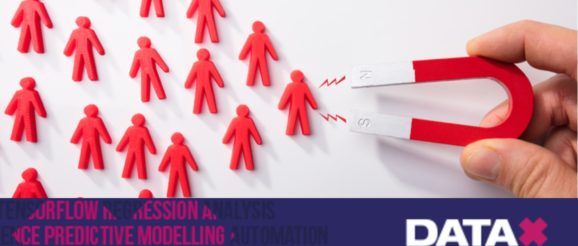How to Identify a Buyer’s Persona and Map Their Customer Journey | Articles | Digital | Innovation Enterprise

Marketing is undergoing some tough times. When 76% people block online ads and skip TV commercials, or 90% of web video viewers opt for clicking “Skip Ad”, according to the
latest research, how is it possible to sell anything?
One way: make sure you are using the latest marketing techniques. Specifically, in the digital era, that includes:
These techniques have proven to be a success, so let’s take a quick look at how it’s done.
Identifying the Buyer
We’d like to say it’s a fairly easy process, but that wouldn’t be true. With the grim figures above, you need to bring your A-game. Luckily, if you have your own brand, one of the techniques below is similar to what you did when you were defining the end buyer.
Start from Yourself
Didn’t see this coming? The very first thing you need to do (if you are completely satisfied with your content and offered services or products) is checking your own site analytics.
Firstly, you’ll need to discover which keyword(s) most of them used to track you, so you’ll have an idea of what their interests are. Next, you’ll see where they came from (the type of devices or platforms), as well as how much time they spend on your site.
Order a Survey
Good old surveys and polls never fail to produce great marketing research. Use social media to your advantage or interview current clients one-to-one. Take a peek at the top competition to see how they’re doing it.
Social listening will also speak volumes. Of course, this is easier if you’ve already built a formidable online presence.
Make a Persona Template
Old but gold. When you’ve gathered the results above, sit down, take a piece of paper or open your laptop, and start defining the demographics of your customer base one step at a time. Brainstorming should be helpful.
Try to answer the
following questions:
Now, let’s move onto to making maps to see the demographics movements.
Mapping the Journey
The very first step in doing this is identifying the buyer’s persona, and you have that covered.
Next, make a map of the online paths a site visitor usually takes. If it’s a new customer, they will probably login, then browse your products, compare them to each other, maybe read the About Us page.
There may be more stops than we’ve named, but once you have these touchpoints, you can start narrowing down the buyer’s goals.
The main goal is the purchase, but what do all those touchpoints tell you? Which pages are the most popular? Does your blog section satisfy the visitor‘s intent? Is the web support team quick and efficient? Do customers usually click on the “reviews” section? Where are the main roadblocks on your website?
Giving up on a purchase doesn’t happen just like that. By tracking the buyer’s roaming, you’ll see in which cases the buyer is most likely to leave the site without making the purchase.
More than ever, it is essential to realize who your buyer is and what their needs are. The rules of the game have become more complicated, especially when one wrong tweet can destroy your sales.
However, if you perform the above analysis, you’ll know just exactly how to appeal to your audience. So, start solving the puzzle — it will definitely pay off.
